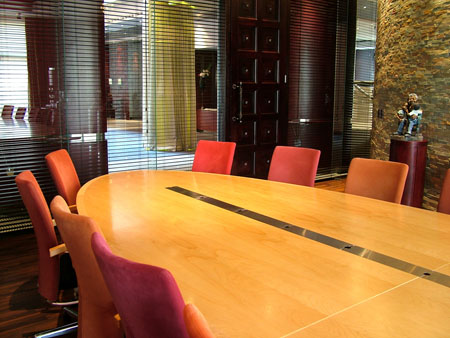Photographing a corporate event carries some responsibility in the same way as photographing a wedding. The clients expect professional results, so it is important to know what you are doing and be well prepared. Preparation can reasonably be summarized as having appropriate experience and equipment, and arriving at the venue properly presented and with full knowledge of the event.
One of the principal problems, if the event is held indoors, is likely to be low light levels. It is vital to be able to work in such an environment and to be properly equipped with professional cameras, lenses and accessories. As with wedding photography, a responsible photographer has a second camera body and a replacement or substitue for every essential item of equipment.
 |
| Image by kind permission of Wynand van Niekerk |
Essential equipment includes a couple of good professional DSLR bodies, preferably equipped with full-frame sensors, with low-noise high ISO performances, and a range of good professional zoom lens, perhaps 17 - 35mm wide-angle zoom, a 50mm f/1.2 standard lens, an 85mm f/1.8 short telephoto, a 105mm or 135mm f/2 portraiture lens and a 70 - 200mm telephoto. lenses featuring image stabilization and a wide maximum aperture are a valuable asset. obviously, equivalent lenses may be found in the ranges of other manufacturers, such as Canon.Also required are a couple of powerful flashguns such as the Nikon Speedlight SB-900 or equivalent. Any flashgun used must have an adjustable head so that light can be bounced from suitable surfaces on to the subjects. Studio lights with umbrellas, set up in a separate room together with an appropriate background, may be worthwhile if numerous portraits are required.
Having assembled all the key items of equipment, do not overlook the consumables and other smaller items. Make sure that plenty of batteries are available, and take replacement rechargeable cells for rapid battery changes. For large events extending throughout the day it may also be worth having battery chargers available so one battery can be recharged while another is in use. Some professional cameras accept two parallel memory cards for added security. It would be embarrassing to lose a card full of images. However, using parallel memory cards also means having twice the number of spare cards available.
As always, an essential part of a successful shoot is planning. Visit the location well before the event and ask to be shown the venue and of course the lighting. Also check whether the use of flash is acceptable. Take a few test shots of the empty room to get an idea of light intensity and white balance. It should then be possible to decide what equipment is needed and how it should be set up. Also ask the event organizer for a detailed schedule of events, and a list of any "must have" photographs in addition to general coverage, and make sure you understand who is in charge on the day and who must be photographed. Without a detailed understanding of this nature it is very unlikely that the day will be a photographic success. However, it is also important to achieve a complete and balanced photographic coverage of the event. Any pictures that are surplus to requirements can easily be discarded.
Personal presentation and behaviour are important. Make sure you understand what sort of event you are being asked to attend, and if necessary enquire about the dress code. Some big events require formal dress and the organizers will not appreciate a photographer tuning up inappropriately dressed. If everyone is wearing a business suit, the photographer should also wear a suit. Be polite and co-operative at all times and try not to disturb groups , individuals or conversations unless it is absolutely necessary. Remain as unobtrusive as possible and, as at a wedding reception, refuse all offers of alcoholic drinks. Do not photograph people eating their meals.
Photographing large groups of people indoors is challenging because it can be very difficult to light everyone evenly. Groups of less than about a dozen people can usually be lit by a single flash bounced from a white ceiling, but larger groups may need to be lit using a couple of studio lights. This needs to be planned and set up in advance of the event. An alternative and arguably better approach is to take the group outside into the daylight where the task becomes one more familiar to wedding photographers. If no convenient steps or tiered area is available, it can be worth having a short stepladder available to gain a little height and improve visibility of the more distant rows in the group. Use a suitable moderately wide-angle lens, perhaps about 35mm focal length, and keep the group as close as possible. Before taking the photographs, pass your eye along each row and make sure every individual can be seen in a clear and comfortable manner.






